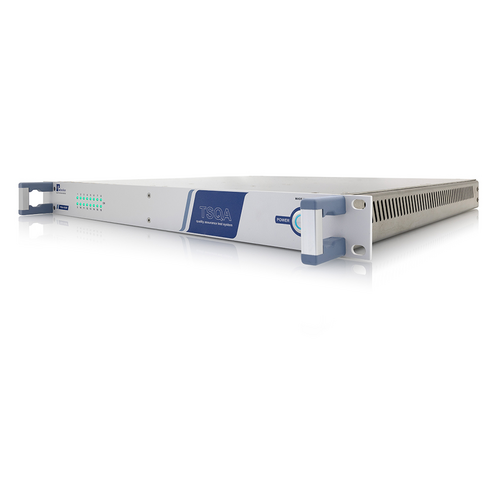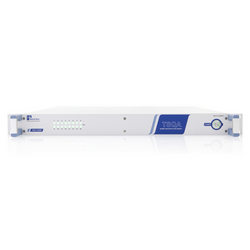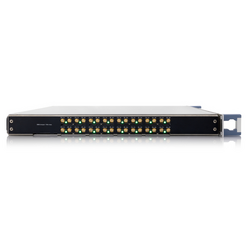TSQA-16XMF
The High Temperature Operating Life Test (HTOL) is an intense stress test performed to simulate aging and accelerate thermally activated failure mechanisms. HTOL testing exposes a large number of devices under test (DUT) to extreme temperatures and absolute peak performance conditions. Typically, it is performed at 125°C and according to the JEDEC JESD22-A108 specification.
TSQA-16XMF integrates 16 channels into a compact device to subject 16 active DUTs to an HTOL test procedure at the same time and to monitor their function simultaneously.
To conduct power stress testing and HTOL testing, it is essential to have RF systems equipped with numerous output channels, ensuring precise and stable output power over an extended period. The TSQA-16XMF system is ideally suited for this purpose, covering the frequency range from 300 MHz to 8500 MHz in 50-ohms technology. This capability positions the system to effectively test the most current RF communication standards using cutting-edge equipment.
19", 1U guided webinterface Automatic Level Control (ALC) 300 ... 8500 MHz
Robust Design
The TSQA-16XMF features an industrial-grade 19” rack enclosure, simplifying the scalability of the system by allowing the addition of multiple devices.
RF Interfaces for DUTs
The TSQA-16XMF offers 16 stimulation and measurement channels for DUTs. The system provides 16 RX and 16 TX ports through SMA female connectors located on either the right or left side of the device.
High Port Isolation
HTOL systems necessitate a substantial level of isolation between their RF output ports. It's imperative that a malfunctioning DUT does not affect the performance of other DUTs during testing. The TSQA-16XMF excels in providing exceptionally high port-to-port isolation, effectively mitigating any potential interference between DUTs.
High Precision of RF Output Level
Every output channel delivers an extremely accurate RF output level with closed-loop level control (ALC), resulting in virtually imperceptible steps. Consequently, it ensures the symmetry among all 16 outputs and maintains long-term stability. Additionally, the control loop's smooth characteristics prevent overshooting.
Pulse Signal Source
The TSQA-16XMF includes an internal pulse signal source in addition to the continuous wave (CW) source. This signal source can also be controlled through the device's LAN remote interface.
Suppression of Harmonics
In HTOL tests, it's essential to focus RF energy primarily on the fundamental signal to prevent undue stress on the DUTs caused by harmonics. The TSQA-16XMF incorporates an adaptive harmonic filter designed to efficiently suppress harmonics, ensuring precise testing conditions.
Remote Control
Both the TSQA-16XMF device can be controlled remotely through the central LAN interface. You can easily configure settings such as test frequency, RF level, CW or pulse mode, and access readouts using straightforward SCPI-oriented ASCII commands.
Furthermore, the device features a universal user interface in the form of a web GUI, allowing for settings to be configured and the device status to be monitored.
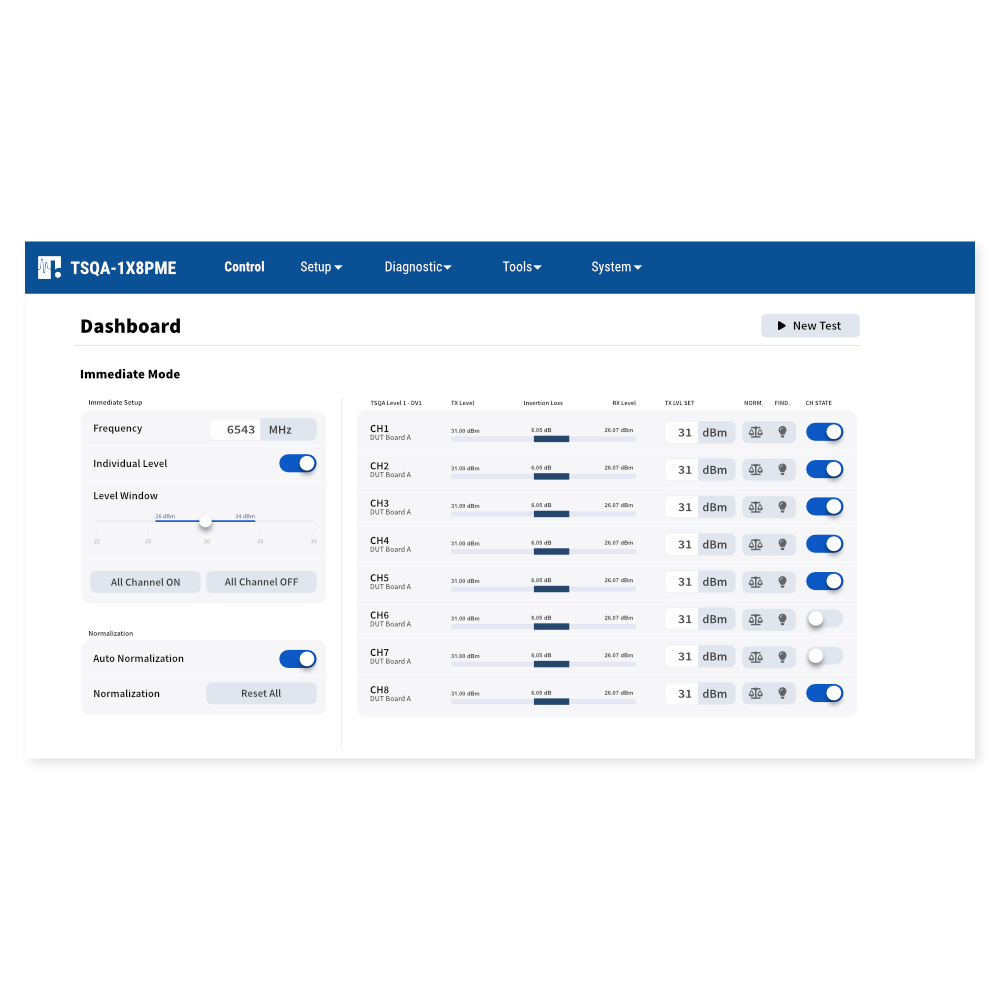
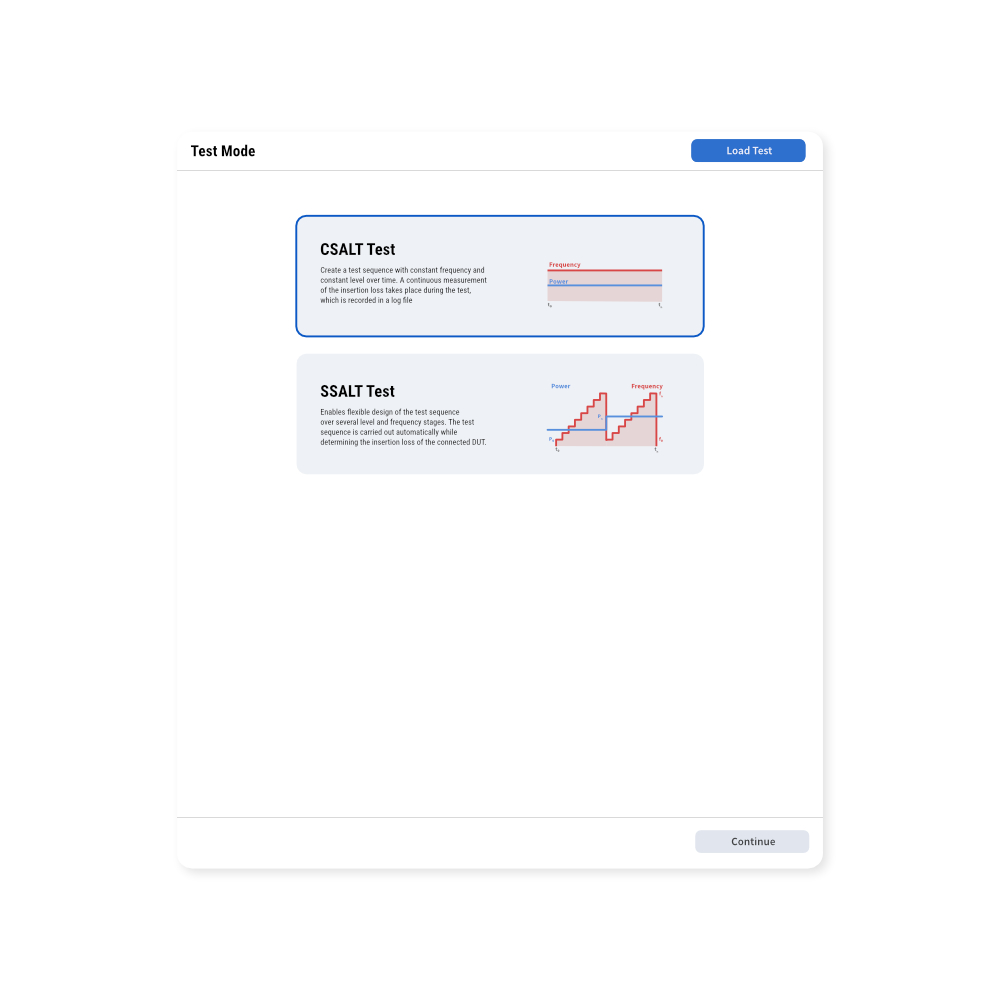
Latest modification: 31.03.2022


